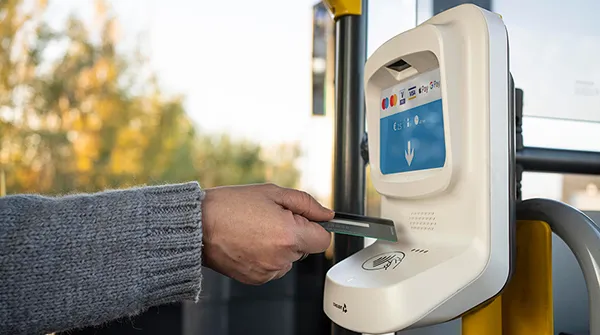Toronto public transport passengers will soon be able to use a single-fare Presto card to get around on the Toronto Transit Commission (TTC) or seven other municipal transit systems in Ontario. Transit and government officials say the Presto fare system will be in place throughout the entire TTC system, subway stations, buses and new streetcars, by 2016. Bob Chiarelli, Ontario’s minister of transportation and infrastructure, said Toronto transit passengers have been requesting the electronic fare system fo
November 30, 2012
Read time: 3 mins
Toronto public transport passengers will soon be able to use a single-fare Presto card to get around on the 4968 Toronto Transit Commission (TTC) or seven other municipal transit systems in Ontario.
Transit and government officials say the Presto fare system will be in place throughout the entire TTC system, subway stations, buses and new streetcars, by 2016. Bob Chiarelli, Ontario’s minister of transportation and infrastructure, said Toronto transit passengers have been requesting the electronic fare system for some time.
“This is a tremendous technological step forward for transit riders,” Chiarelli said during a news conference in Toronto, where he was joined by6394 Metrolinx president and CEO Bruce McCuaig, TTC CEO Andy Byford and TTC chair Karen Stintz.
Plastic, reloadable Presto cards can already be used at fourteen subway stations within the TTC’s network. The TTC is moving toward a single-fare system for the entire network because it is a condition of the US$8.4 billion in provincial funding for light-rail transit expansion in Toronto.
According to Byford, as the TTC moves away from tokens and passes, it is eyeing technology that would allow customers to use their credit cards or smartphones to access transit services.
As for the Presto card, he said users are currently armed with a first-generation card, but riders will be using the more sophisticated second-generation card when the TTC is added to the Presto system, enabling TTC users to use the same card to travel on transit systems from Hamilton to Durham Region, including6218 GO Transit services.
Transit agencies are switching to the electronic fare card because, they say, it gives riders flexible payment options, reduces administrative costs for transit agencies, and can be used on a number of transit systems.
Currently, people can load their cards via the internet, by visiting a customer service desk or by telephone, or through automatic payments.
Metrolinx, the province's transit agency, is testing self-service kiosks that would accept credit or debit cards for payment. According to Metrolinx, more than 400,000 transit users in the Toronto and Hamilton areas are already using Presto fare cards, with an average of 22,000 new users a month. The system is currently available at all GO stations, on all GO buses and eight municipal transit systems, including parts of the TTC, Metrolinx said.
Transit and government officials say the Presto fare system will be in place throughout the entire TTC system, subway stations, buses and new streetcars, by 2016. Bob Chiarelli, Ontario’s minister of transportation and infrastructure, said Toronto transit passengers have been requesting the electronic fare system for some time.
“This is a tremendous technological step forward for transit riders,” Chiarelli said during a news conference in Toronto, where he was joined by
Plastic, reloadable Presto cards can already be used at fourteen subway stations within the TTC’s network. The TTC is moving toward a single-fare system for the entire network because it is a condition of the US$8.4 billion in provincial funding for light-rail transit expansion in Toronto.
According to Byford, as the TTC moves away from tokens and passes, it is eyeing technology that would allow customers to use their credit cards or smartphones to access transit services.
As for the Presto card, he said users are currently armed with a first-generation card, but riders will be using the more sophisticated second-generation card when the TTC is added to the Presto system, enabling TTC users to use the same card to travel on transit systems from Hamilton to Durham Region, including
Transit agencies are switching to the electronic fare card because, they say, it gives riders flexible payment options, reduces administrative costs for transit agencies, and can be used on a number of transit systems.
Currently, people can load their cards via the internet, by visiting a customer service desk or by telephone, or through automatic payments.
Metrolinx, the province's transit agency, is testing self-service kiosks that would accept credit or debit cards for payment. According to Metrolinx, more than 400,000 transit users in the Toronto and Hamilton areas are already using Presto fare cards, with an average of 22,000 new users a month. The system is currently available at all GO stations, on all GO buses and eight municipal transit systems, including parts of the TTC, Metrolinx said.









